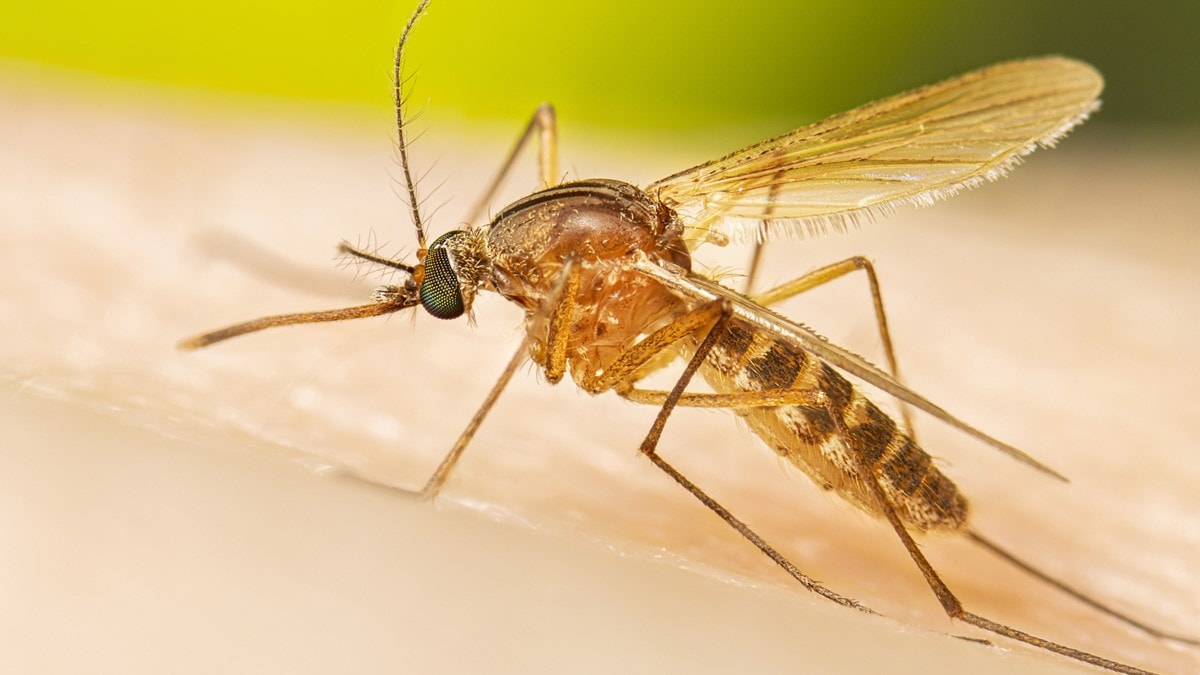What to know
- CDC offers mosquito and tick pool testing to local, state, and territorial health departments (this service is not offered to the public).
- Entomologic specimens that are labeled, packaged, and shipped correctly can be incorporated into the testing workflow quickly and efficiently.
- Proper preparation allows for a faster return of results.

Preparing tubes
Sort mosquitoes directly into the tubes that will be used for shipping so that testing lab staff do not take time transferring specimens into new tubes after your shipment arrives. CDC recommends using Axygen 2.0 milliliter MaxyClear snaplock microtubes. Add one metal BB to each tube as you sort the pools.
When labeling tubes, use one of the following methods:
- Affix thin cryovial labels to the side of the tubes. Do not use thick labels or tape, as these may need to be removed and the tubes relabeled before inserting them into a homogenizer at the testing laboratory.
- Label the lid of each tube with a permanent marker.
The labeling format can be as simple as a tube ID number that corresponds with the comprehensive data found in the datasheet you prepared when sorting, identifying, and pooling specimens.
Preparing sample boxes
Once your tubes are correctly prepared and labeled, prepare your sample boxes.
Place tubes in numerical order into an appropriate box
This could be a white cardboard freezer box with dividers or a plastic tube box.
Do not put loose tubes into a plastic bag
It takes a lot of time to get these back in order at the testing facility.
Do not wrap the tube lids in plastic or parafilm
Make sure the lids are completely closed before placing tubes into the box.
Mark the box where the first tube sits and draw an arrow to show the direction of numbered tubes
For example, you may load the box from the top left to bottom right or from the bottom left to top right.
Seal the box with tape or a tight rubber band
Secure the lid during shipment. You can also place the box in a plastic bag to prevent it from getting wet. Excessive packaging is not necessary and can be time-consuming for testing lab staff to remove.
Label the box with your organization's name, the date, and sample numbers
- Include box numbers if you are shipping multiple boxes.
- The testing lab likely receives multiple boxes from many different submitters, and packages may not be unpacked and placed into a holding freezer by the same lab staff who performs testing.
- Labeling the outside of the box ensures efficient organization and identification of your samples amongst other submissions.
Place the boxes into a negative 80-degree or negative 20-degree Celsius freezer
Keep samples cold until you’re ready to ship them.
Preparing the shipping container
Use a shipping container specifically designed to ship cold materials. You may use either blue ice packs or dry ice at the bottom of the container to keep your specimens cold. Dry ice is the preferred method for keeping your shipment cold. However, shipping dry ice is regulated by the U.S. Department of Transportation. Make sure you understand the precautions and regulations involved when shipping dry ice by consulting your shipping carrier's website, or by calling them directly for guidance.
CDC recommends 5 pounds of dry ice for every 24 hours the package will be in transit. You may need to make adjustments based on weather.
Place your boxes in the shipping container and include a printed copy of your datasheet inside a plastic bag to keep it from getting wet.
Ideally, your container will be large enough to hold your boxes and the appropriate amount of ice, but small enough that there’s not a lot of extra space. Fill any empty spaces with newspaper or other packaging material so your sample boxes don’t jostle around during shipment.
Shipping confirmation
Ask your carrier to confirm that the package was delivered or track the package yourself using the tracking number.
Shipping Questions
Training video
The American Society for Microbiology and CDC prepared a How to Ship Entomological Specimens for Arbovirus Testing video. The video demonstrates how to properly prepare and ship entomologic specimens. Please follow your organization’s safety guidance on proper personal protective equipment (PPE) when working with mosquitoes.
